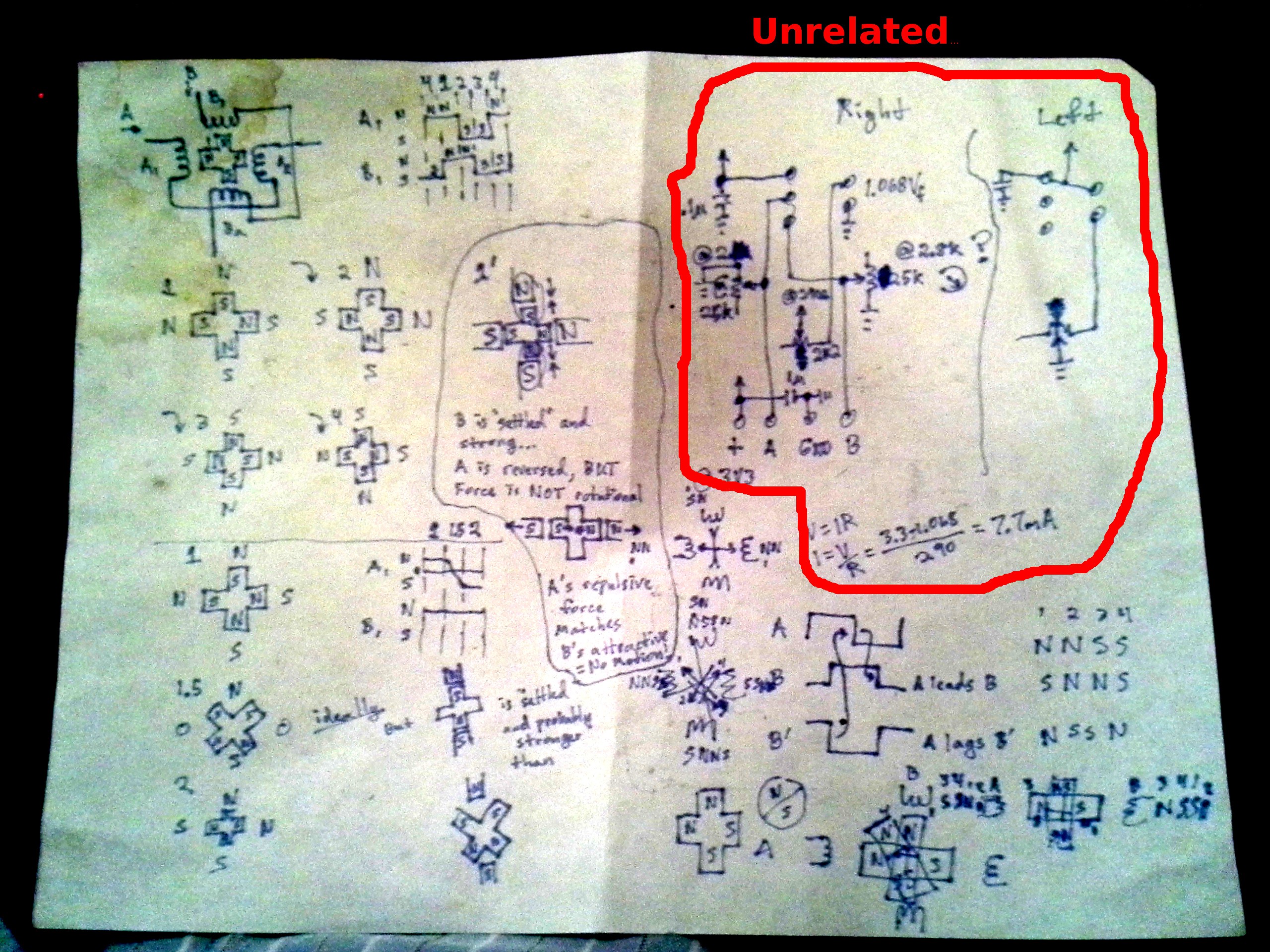In an earlier log I commented something along the lines of: "reducing missed-steps by microstepping unipolar stepper motors makes sense to me, but I can't quite wrap my head around why microstepping bipolars would result in reduction of missed-steps."
So I spent a few hours the other day thinking about the matter.
Now, this is purely hypothesis...

Obviously, I wouldn't have to hypothesize on the matter if I was some sort of stepper-expert. And, frankly, I didn't even look online to see if my idea of the poles of the rotor make sense. (Somewhere I recall a vague idea that steppers have one less "tooth" on the rotor than the number of electro-magnets' teeth.) This is an exercise in deductive-reasoning, and this is what I came up with.
Anyways, the idea is similar to two solenoids pulling against each other... an experiment I did a while back. Imagine two solenoids equally powered, and their... shaft(?) is shared. One's pulling left, the other right. They should be pulling with equal-force, right? And the shaft should be held somewhere in the middle, right? Nah... Whichever is closer "wins". (What if the shaft was magnetized?)
So, in the bipolar stepper case, say both windings are pulling equally, you'd expect the rotor to be halfway between steps, but realistically, it'll either stay at whichever step it's already at, or an external force may (easily) force it to snap between one or two stable-ish positions.
Another case, for instance, is when one set of windings is *opposing* the magnet on the rotor, while another is *attracting*... Say the motor's stable/stationary at that point, already... Then, as I see it, the attractive-force is pulling the rotor in opposite directions; not rotationally, but radially. That's a pretty stable holding-position. The opposing magnets, on the other hand, are pushing the rotor *inward* toward each other... again, not rotationally, but radially. Their forces cancel each other out. The shaft doesn't really want to rotate, it just feels a crushing sensation.
Again, there may be some features of steppers I haven't really taken into consideration. E.G. there may be 4 windings and 3 poles on the rotor. But the concept is out there to mull-over... that there may be somewhat "stable" positions wherein the most-stable position may be at one step, but since it's already at another step, it doesn't really want to move to that "most-stable" position.
So, throwing about some microstepping, we have a bit more ability to force the rotor to rotate between these positions. A bit more control over the process of moving from one position to the next.
Anyways, microstepping a bipolar stepper shouldn't be much more difficult than microstepping a unipolar. In fact, it seems to me, that driving a unipolar stepper with a bipolar signal (not the *same* signal as used by a bipolar motor, but a signal that does in fact switch between two different poles, thus bipolar) ...doing-so would probably increase the holding/positioning-power of unipolar steppers, as well. It'd require twice(?) as many H-Bridges, but doable. I guess, really, it depends on whether the unipolars have magnetized rotors, or if the rotor is merely ferrous. But, again, I read somewhere that unipolars can be made bipolar by tying their windings together, which seems to imply magnetic (rather'n "passive") rotors.
So here's how I'm seeing it:
In a unipolar configuration, even with some forms of microstepping, there's basically a pull-only mode... Each winding is essentially pulling the rotor around in sequence. Between steps, two windings pull at the same time, with varying power, so it pulls more toward one than the other. In the bipolar case, there's a pulling *and* a pushing involved. When not microstepping, two windings could be pulling, or one could be pulling while the other is pushing. Interesting to ponder, but a bit outside my headspace at the moment.
Anyways, it's certainly *easier* to consider a stepper motor a motor that steps between positions rather than thinking of it like a really-high-precision brushless DC motor, or even a multiphase AC motor, which they both basically are. No?
 Eric Hertz
Eric Hertz
Discussions
Become a Hackaday.io Member
Create an account to leave a comment. Already have an account? Log In.